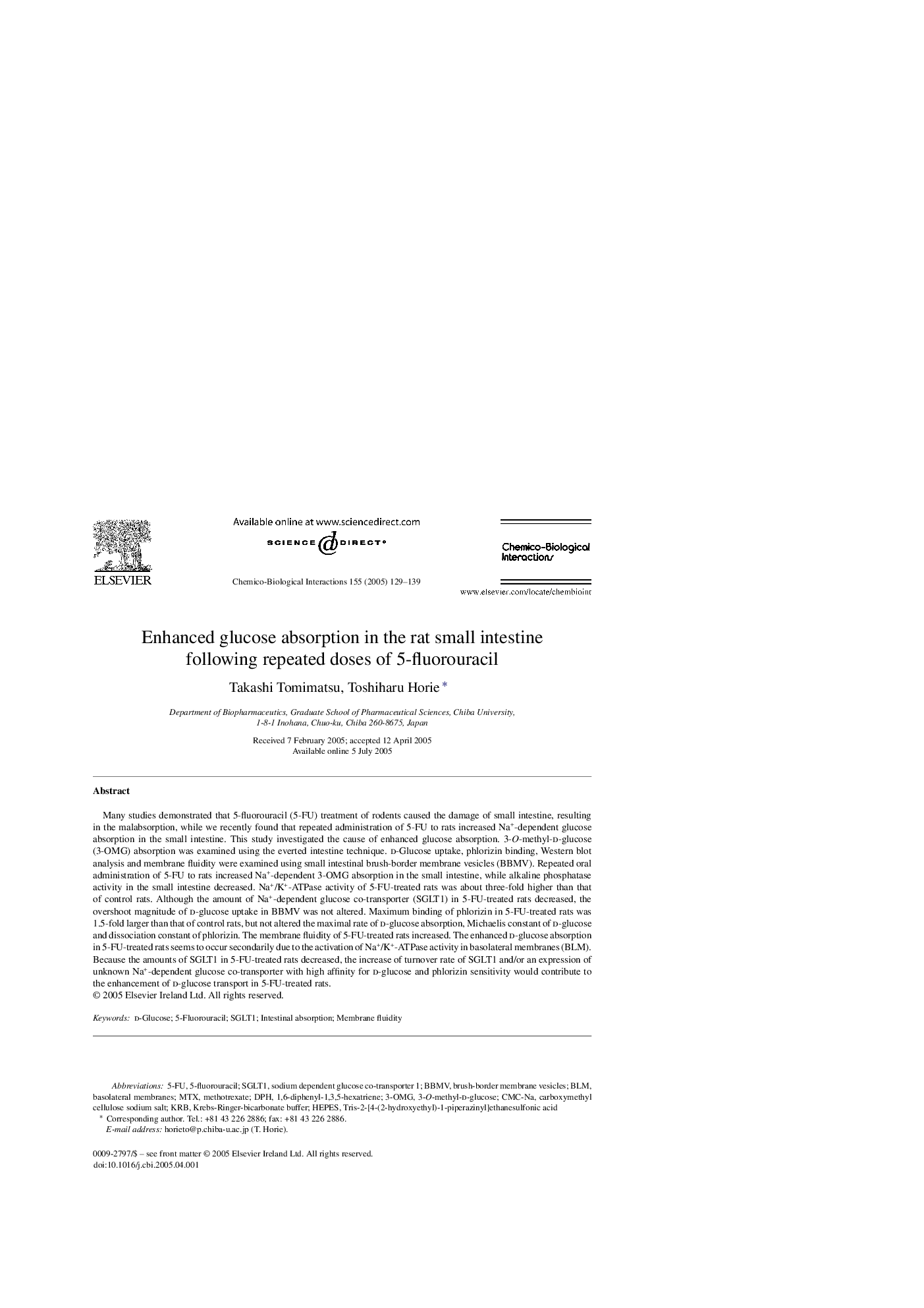| Article ID | Journal | Published Year | Pages | File Type |
|---|---|---|---|---|
| 9029438 | Chemico-Biological Interactions | 2005 | 11 Pages |
Abstract
Many studies demonstrated that 5-fluorouracil (5-FU) treatment of rodents caused the damage of small intestine, resulting in the malabsorption, while we recently found that repeated administration of 5-FU to rats increased Na+-dependent glucose absorption in the small intestine. This study investigated the cause of enhanced glucose absorption. 3-O-methyl-d-glucose (3-OMG) absorption was examined using the everted intestine technique. d-Glucose uptake, phlorizin binding, Western blot analysis and membrane fluidity were examined using small intestinal brush-border membrane vesicles (BBMV). Repeated oral administration of 5-FU to rats increased Na+-dependent 3-OMG absorption in the small intestine, while alkaline phosphatase activity in the small intestine decreased. Na+/K+-ATPase activity of 5-FU-treated rats was about three-fold higher than that of control rats. Although the amount of Na+-dependent glucose co-transporter (SGLT1) in 5-FU-treated rats decreased, the overshoot magnitude of d-glucose uptake in BBMV was not altered. Maximum binding of phlorizin in 5-FU-treated rats was 1.5-fold larger than that of control rats, but not altered the maximal rate of d-glucose absorption, Michaelis constant of d-glucose and dissociation constant of phlorizin. The membrane fluidity of 5-FU-treated rats increased. The enhanced d-glucose absorption in 5-FU-treated rats seems to occur secondarily due to the activation of Na+/K+-ATPase activity in basolateral membranes (BLM). Because the amounts of SGLT1 in 5-FU-treated rats decreased, the increase of turnover rate of SGLT1 and/or an expression of unknown Na+-dependent glucose co-transporter with high affinity for d-glucose and phlorizin sensitivity would contribute to the enhancement of d-glucose transport in 5-FU-treated rats.
Keywords
Related Topics
Life Sciences
Environmental Science
Health, Toxicology and Mutagenesis
Authors
Takashi Tomimatsu, Toshiharu Horie,
